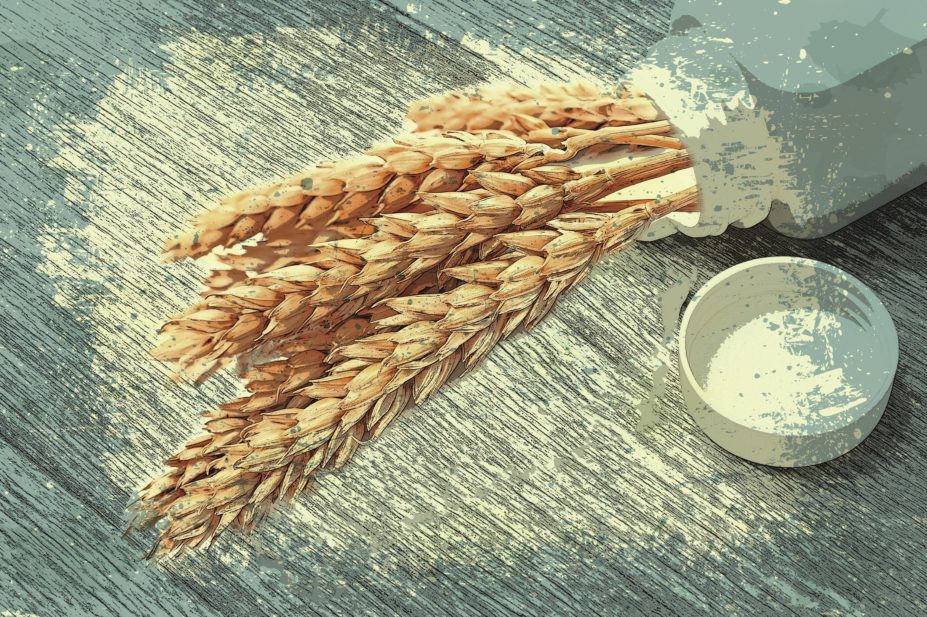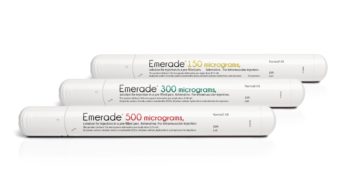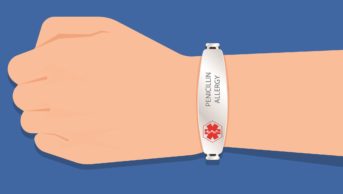
Shutterstock.com
Provision of gluten-free food on prescription has been in the news recently, with reports debating the cost of these products to the NHS in the
Daily Mail
, the
Daily Telegraph
,
The Independent
and BBC News, to name a few. There is a genuine debate about prescribing gluten-free food, but we need to separate the facts from the headlines and examine the evidence.
Real figures
Coeliac disease is a lifelong disorder, with a prevalence of around 1% in the UK. Although alternative therapies are under development, currently the only treatment is the adoption of a gluten-free diet. Adherence to a gluten-free diet is variable, ranging from 42% to 91%[1]
. Research by Coeliac UK, a national charity supporting patients with coeliac disease, has shown that access to gluten-free food on prescription is the most important factor in terms of adherence to the diet. Gluten-free foods have been available on prescription in the UK for nearly 50 years. Their approval for prescription is made by the Advisory Committee on Borderline Substances (ACBS)[2]
. The ACBS also approves foods for other special diets. The £116m quoted by the Daily Mail includes low protein foods for patients with renal failure, specialist infant formula milks and oral nutrition supplements — only 23% of that figure is spent on foods for coeliac patients.
National guidelines for prescribing
In 2004, a group of NHS clinicians developed a prescribing guideline for Coeliac UK and this was endorsed by the Primary Care Society for Gastroenterology and the British Dietetic Association — the National Prescribing Guideline. This was updated in 2011 and 2012[3]
. The recommended amount of gluten-free food is based on a review of consumption data from the National Diet and Nutrition Surveys to establish a benchmark for the reasonable amount of gluten-free food on prescription, and a consideration of the Eatwell Plate model for balanced eating. The guideline includes a table with recommended units of food for different age groups, for women who are breastfeeding and for women in the third trimester of pregnancy. Coeliac UK has facilitated discussions between major suppliers and wholesalers to ensure shipping costs of sending these foods to pharmacies are not levied on gluten-free prescription staples.
The ‘All Wales guide to prescribing gluten-free products’[4]
supports the prescribing of gluten-free staples in Wales and is in line with the national guideline. The Wales guideline states: “It is not recommended that practices limit themselves to a narrow formulary” and “variety and acceptability of the diet can enhance adherence, with resulting improvements in outcomes”. In Northern Ireland, the Health and Social Care Board supports the prescribing of gluten-free staples in terms of the amounts and range in the national guideline. A pilot community pharmacy gluten-free supply service was introduced in Scotland in early 2014 whereby patients register with a pharmacy. The service will now be delivered as part of the national contract[5]
in Scotland. All of the 14 Scottish NHS Boards recommend amounts of gluten-free food in line with the national guideline, but the choice of gluten-free foods in many cases is restricted by a local formulary from a selected range of brands and products.
It is not recommended that practices limit themselves to a narrow formulary — variety and acceptability of the diet can enhance adherence
In England, the Health and Social Care Information Centre 2014 prescription cost analysis[6]
shows that the net ingredient cost for gluten-free foods (not including prescriptions for patients with renal disease) totalled £26.8m (a 1% lower figure than 2013 despite an increase in the number of coeliac patients diagnosed). The total net ingredient cost for all prescribed drug and other products was £8.85bn. Therefore, gluten-free foods comprised only 0.3% of this cost.
Around 65% of the total cost of gluten-free food was for gluten-free bread and 17% for proprietary gluten-free flour mixes for baking of bread or rolls at home. The clinical commissioning groups (CCGs) in Cumbria, Northamptonshire and Bedfordshire have adopted a pharmacy supply scheme for gluten-free foods, and they adhere to the national guideline in terms of the amounts and range of gluten-free foods that can be supplied.
CCG postcode lottery
About 67% of 211 CCGs support gluten-free GP prescribing in line with the amount and range of products specified in the national guideline. However, one CCG (North Norfolk) has banned prescribing and around 50 CCGs have introduced restrictions on both the amounts and range of products that are allowed to be prescribed. This has introduced a postcode lottery for many coeliac patients because the gluten-free products they are able to obtain is dependent on where they live rather than their needs. Many of the restricted lists are based on a bulletin from PrescQIPP (an NHS programme that supports quality, optimised prescribing for patients)[7]
, which recommended an amount approximately 50% less than in the national guideline.
PrescQIPP claims to have engaged with a broad range of stakeholders, including patients and carers, to provide robust, evidence-based prescribing resources to NHS commissioners. However, even though there was consultation with Coeliac UK, which represents patients with coeliac disease, it still contains a number of inaccuracies. The individual CCG guidances specify an eclectic mix of types of products and manufacturers, seemingly often without any clear criteria for the choice. One issue has been the pressure on patients to use individual flours (such as teff flour from Ethiopia) for baking instead of commercial mixes. The prescriptions for these flours comprise 0.2% by value of the total of prescribed foods, so they are not widely used. Recipes for breads commonly use several flours and a gum such as xanthan gum to replace gluten — so individual flours are not practical for patients to use.
Availability of gluten-free foods
The main driver for the restrictions introduced by these CCGs is undoubtedly financial — the need to make savings in drug budgets. The main argument for restrictions is the assertion that the variety and accessibility of gluten-free products in supermarkets has improved dramatically, and that they are now widely available. This is not the case.
A paper by Singh and Whelan from King’s College London in 2011[8]
investigated the availability of a range of 20 foods across 30 different stores in five store categories. They concluded that there was limited availability of gluten-free foods, with regular supermarkets having a greater availability but with budget supermarkets and corner stores having almost none. Another study reported in 2015 by Burden et al from the Academic Department of Gastroenterology at Sheffield University[9]
surveyed 67 supermarkets of a range of sizes and locations and found that 40% stocked no gluten-free items. There was a wider range available in regular and luxury supermarkets. Thus, the prescribing restrictions are based on a false premise.
The CCGs that have restricted prescribing have been asked by Coeliac UK about the ongoing monitoring of the health outcomes of their policy. No such monitoring has been introduced, which is important since we know, anecdotally, that around 40% of patients do not receive the annual blood tests and check-ups recommended in the 2014 British Society for Gastroenterology guideline[10]
to monitor their health. A 2013 survey of 1,000 patients, commissioned by the British Specialist Nutrition Association[11]
, looked at the impact of restrictions to gluten-free foods in 20 primary care trust areas. The responses showed that the greatest impact was a financial one, with 82% saying that restrictions had a negative impact and that it was harder to afford gluten-free products to help them manage their diet. One-third said it made gluten-free food harder to find, and 17% said they were less sure that what they were eating was right for them. The average age when coeliac disease is diagnosed is in the fifth decade, and twice as many women as men suffer from the disease. The restrictions adversely impact the most vulnerable, those on fixed incomes and people with limited mobility.
Cost-effective solution
There is an alternative solution that can save money but would not adversely impact on health outcomes of coeliac patients. In 2011, Coeliac UK issued a toolkit on pharmacy supply of gluten-free foods[12]
that showed NHS savings of 20–40% over GP prescribing. The scheme was favourably viewed by all stakeholders — patients, pharmacists and GPs (it removed their need to prescribe). It just needs a small modicum of effort for the initial organisation and then for routine control. It certainly fits in with the current campaign to integrate community pharmacy and GP care to improve care for patients.
The controversy about the small NHS spend on gluten-free food is based on exaggeration from the tabloids and misleading data. The restrictions on supply of gluten-free foods by some CCGs is based on the false premise that these products are now widely available in supermarkets and shops. This postcode lottery needs to end — all patients deserve equal access to the only treatment for their long-term condition. Failure to provide this access risks reduction in dietary adherence in the most vulnerable, leading to an increased risk of gastrointestinal cancers, osteoporosis, infertility and anaemia; and discomfort and suffering from gastrointestinal problems.
Tony Cartwright is a retired pharmacist, a coeliac patient and member of the Coeliac UK Health Advisory Network.
References
[1] Hall NJ, Rubin G & Charnock A. Systematic review: adherence to a gluten-free diet in adult patients with coeliac disease. Alimentary Pharmacology and Therapeutics 2009;30:315–330. doi: 10.1111/j.1365-2036.2009.04053.x.
[2] Advisory Committee on Borderline Substances. List (2014).
[3] Coeliac UK. Gluten-free foods: a revised prescribing guide 2011 (updated in 2012).
[4] All Wales Medicines Strategy Group. All Wales Guide to Prescribing Gluten-free Products. September 2014.
[5] Scotland rolls out gluten-free food service through pharmacies. The Pharmaceutical Journal September 2015. doi:10.1211/PJ.2015.20069427.
[6] Health and Social Care Information Centre. Prescription Cost Analysis England 2014. 8 April 2015.
[7] NHS PrescQIPP. Bulletin 69. NHS PrescQIPP Guidance on the prescribing of gluten-free foods. February 2015.
[8] Singh J & Whelan K. Limited availability and higher costs of gluten-free foods. Journal Human Nutrition and Dietetics 2011;24:479–486. doi:10.1111/j.1365-277X.2011.01160.x.
[9] Burden M, Mooney PD, Blanchard RJ et al. Cost and availability of gluten-free foods in the UK: in store and on-line. Poster presentation, 2015 Coeliac UK Research Conference.
[10] Ludvigsson JF, Bai JC, Biagi F et al. Diagnosis and management of adult coeliac disease. Guidelines from the British Society of Gastroenterology. Gut 2014;63:1210–1228. doi:10.1136/gutjnl-2013-306578
[11] Opinion leader. The impact of restrictions to the gluten-free prescription foods on people with Coeliac Disease. Report of findings. April 2013.
[12] Coeliac UK. Community pharmacy supply of gluten-free foods – a toolkit for commissioners. November 2011.


